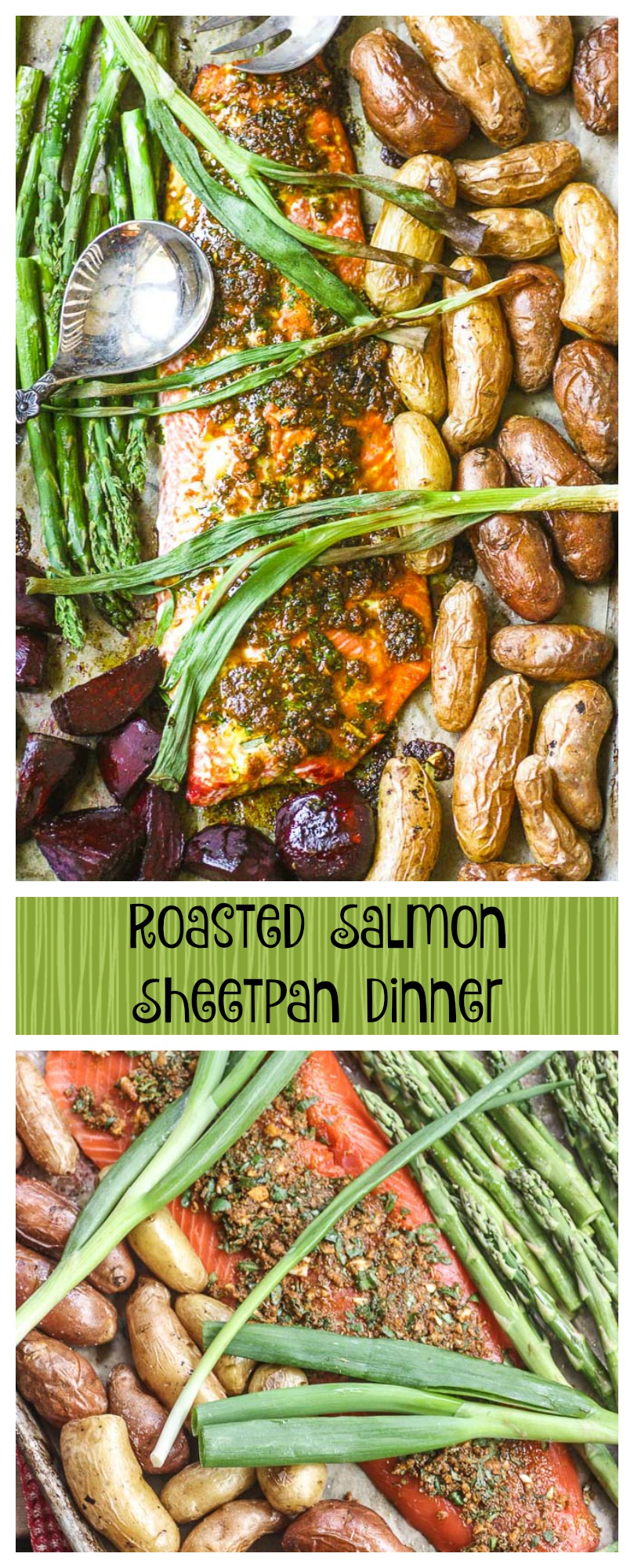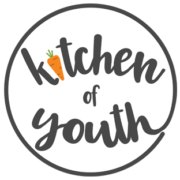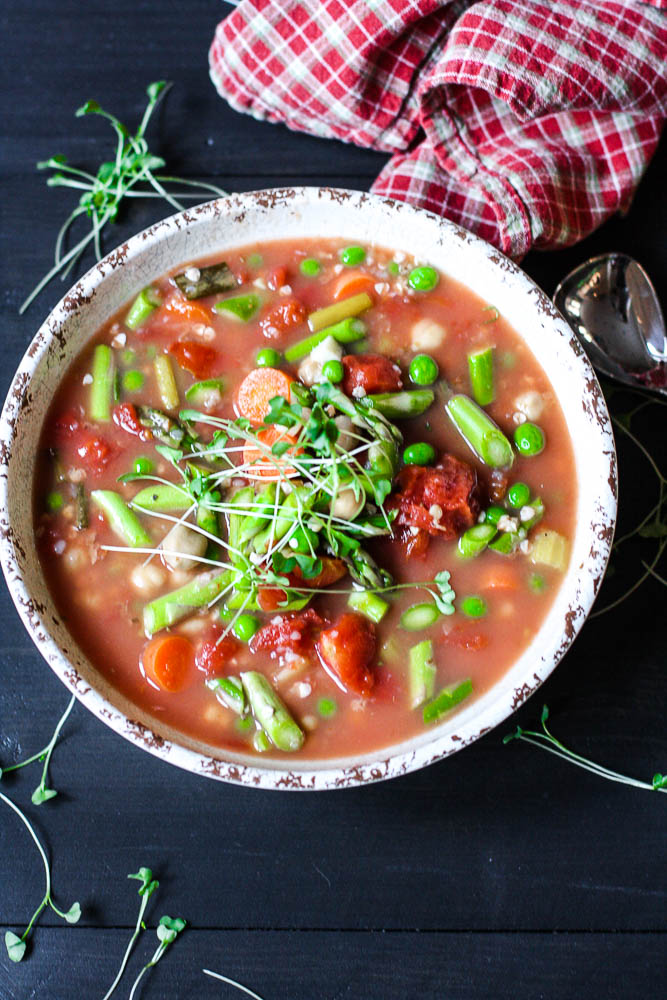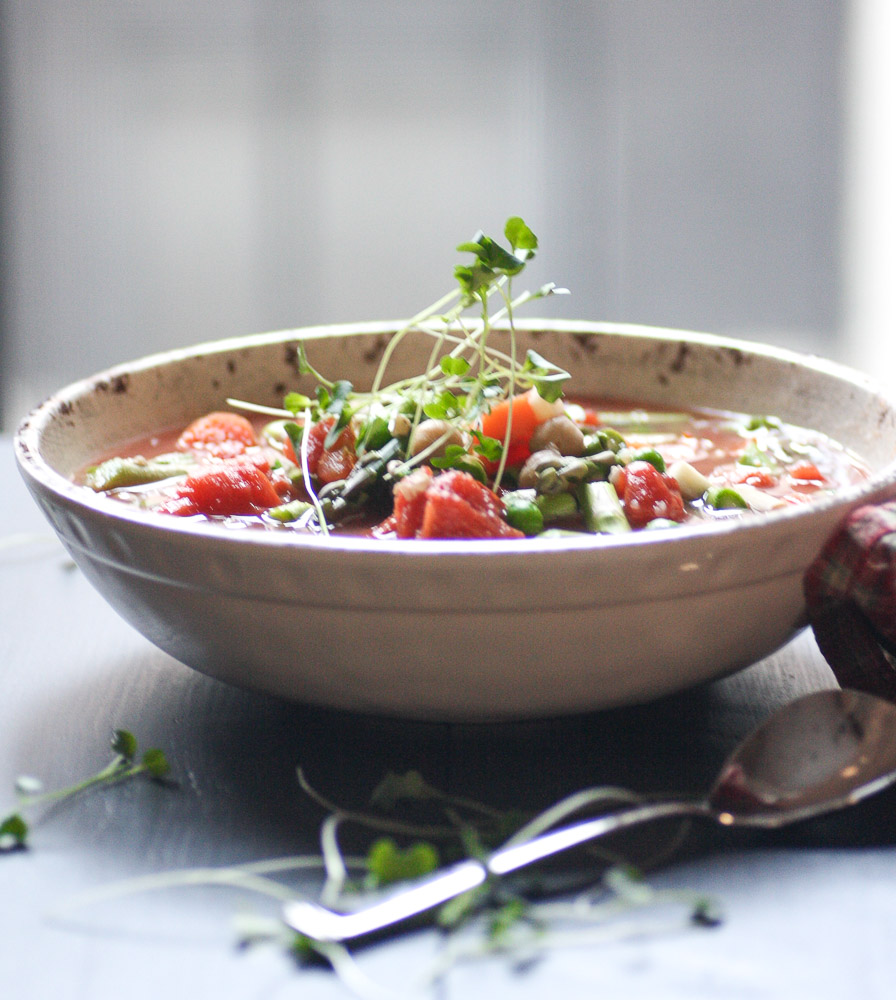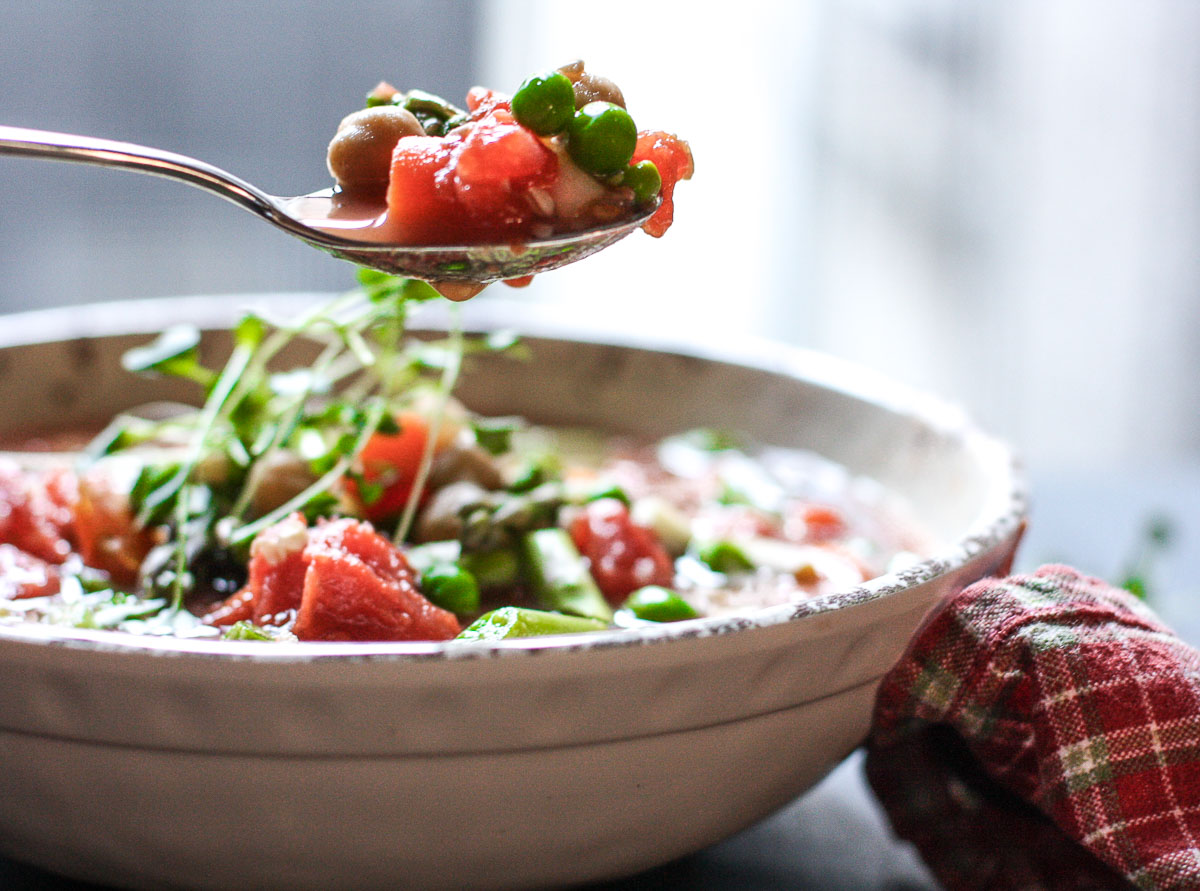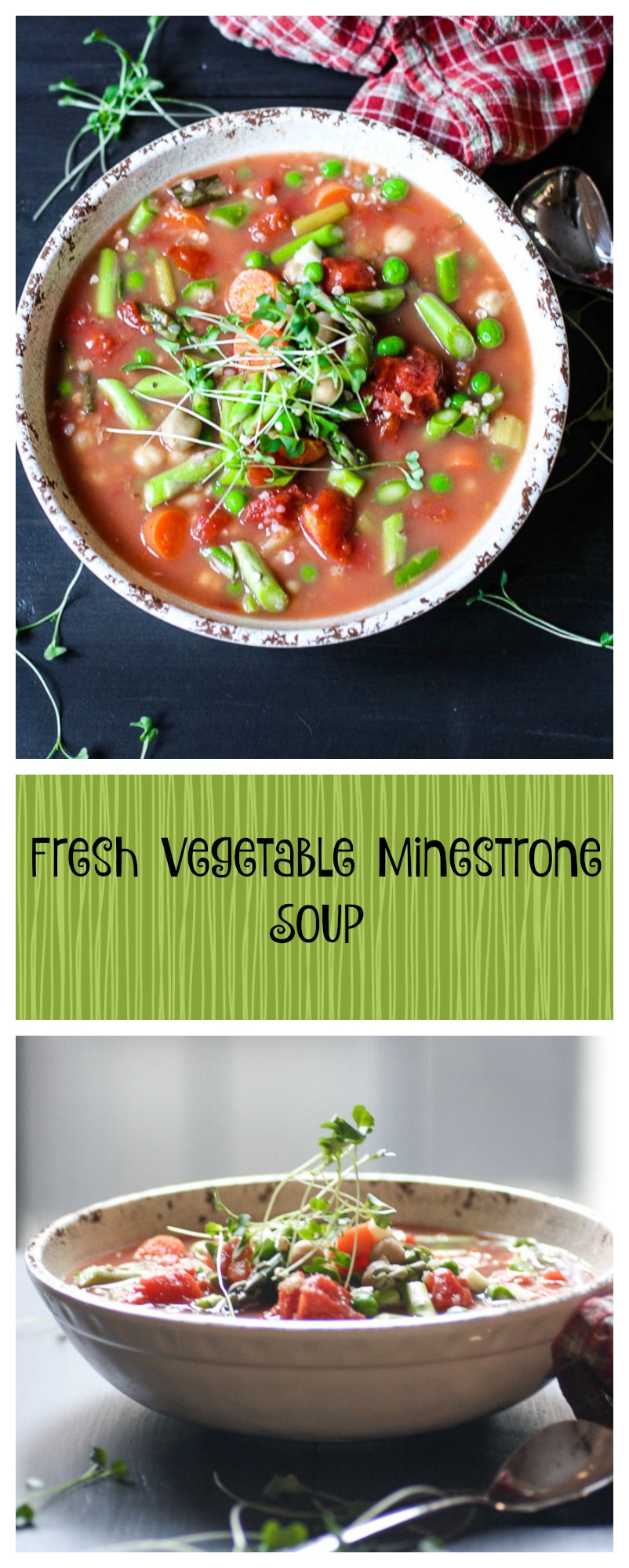Roasted Salmon Sheet Pan Dinner
This roasted salmon sheet pan dinner is delicious, healthy, and so easy!
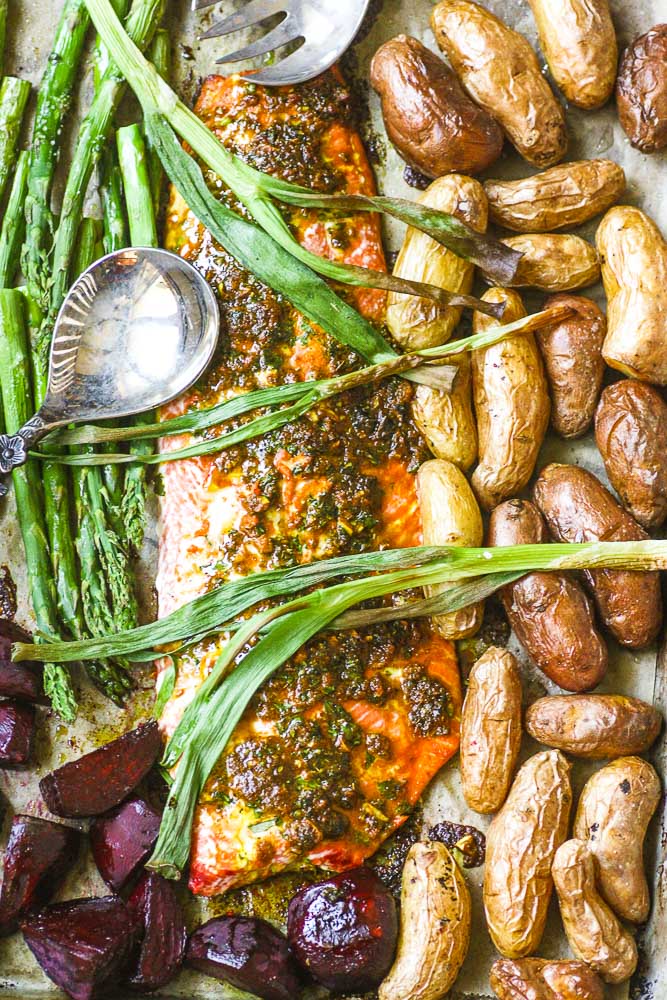
I think if I had to pick a cooking method that is my favorite way to cook, it would be roasting. Roasting is the most idiot-proof method of preparing food. When in doubt, roast it. You can roast meats, vegetables, fish, fruit… and if you season the food properly, it will almost always come out good.
A few days ago, my real estate agent told me she was showing my house around dinner time. What this meant to me was that the salmon in the fridge that was waiting to be cooked, would have to be cooked in the morning so as to avoid potential buyers thinking my house smelled bad. I’m not usually a big fan of cooking fish in advance, but I figured I’d try the sheet pan method, and to be honest, I was just hoping the food would be OK. I wasn’t expecting miracles, I was just hoping to avoid scrunched up noses of my visitors.
Miracles do happen. Even hours later (about 9 hours later), I took my cooked sheet-pan dinner out of the fridge where I had put it after I cooked it in the morning, and I covered it with foil, and reheated it in the oven… and OMG, it was awesome.
So, I will be bowing down to my old tarnished sheet-pans a lot more often! And not just for this roasted salmon sheet pan dinner… mark my words, there will be many others…
Sheet-pan dinners are deliciously easy time-savers. All you do is put your food on the pan, season it, and pop it in the oven. That’s it. Even non-cooks can make this recipe. And, let me tell you, when you take it out of the oven, you look all kinds of cool and funky if you serve the food right on the tray you roasted it on… Maybe this is why I’m starting to see them pop up all over in my favorite food blogs. This roasted salmon sheet pan dinner recipe was inspired by one of my all-time favorite food blogs: Half Baked Harvest.
For another delicious simple fish recipe, take a look at my recipe for Lemon Pesto Fish Fillets.
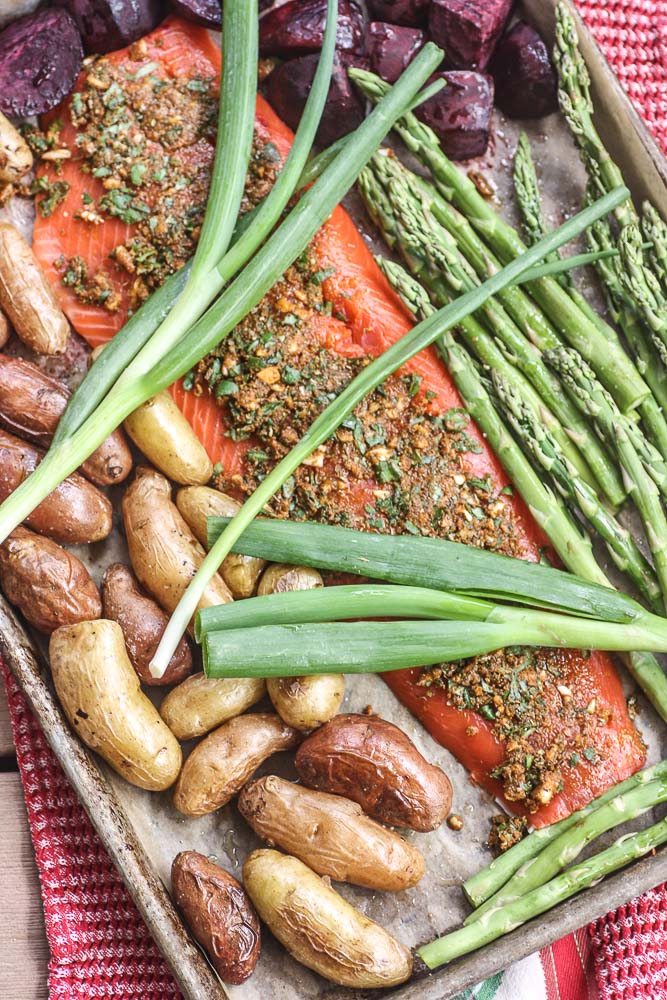
Other than the ease and the deliciousness (is that even a word?) of this sheet-pan dinner, here are some more reasons to make this:
Salmon is the perfect food to nourish the blood and the yin. It’s especially great for women because it raises fertility levels by promoting a healthy endometrial lining. Salmon is also great for anyone who is in need of additional iron. Be sure to buy wild salmon because the levels of mercury are lower than in farmed salmon. This beautiful fish also contains large amounts of omega-3 fatty acids, making it a good food source to combat breast cancer, Alzheimer’s, asthma, depression and diabetes. Lately there’s also been a lot of evidence that salmon is great at reducing intestinal inflammation and that it’s also good for your joints and muscles.
Beets are SO good for you. I try to find ways to fit them into my meals as much as possible. Really… many times a week. Beets nourish blood and tonify the heart. Athletes are starting to drink beet juice as a form of endurance therapy. They are anti-carcinogenic, good for anemia, and relieve constipation. I also think it’s a great idea to eat them raw sometimes because their amazing goodness is even more pumped up this way — I’m still learning to like raw beets, and in part of my “training” to like them, I am starting to under-cook them sometimes now…
Spring is asparagus season. In Chinese medicine, we use asparagus to heal the body from within; it gets rid of excess heat in your body, is good for circulation, can remove plaque from the arteries, soothes constipation and is good for hypertension. Many years ago, doctors used to prescribe asparagus juice to reduce cholesterol. Women can especially benefit from this vegetable’s healing abilities: it helps with menopause and fertility. One of my favorite Chinese herbs is called Tian Men Dong and it’s a form of asparagus. It’s great if you have yin deficiency (like so many woman do…), it can help if you have a dry cough, hot flashes, constipation, or night sweats.
Scallions, if you know me, are one of my favorites. In Chinese medicine, the root of the scallion is a healing herb (Cong Bai). I always keep scallions on hand in my refrigerator so that I can whip up a batch of cold and flu fighting tea (scallion roots and ginger) the second anyone feels that scratchy throat coming on. It helps the body sweat out toxins. Scallions are antiviral and antibacterial; they are good for the common cold and general nasal congestion — just don’t eat too many if you have a fever.
Basil has anti-viral and anti-bacterial capabilities. It also is good for settling your stomach, and it’s good at lessening the symptoms of the common cold and its accompanying cough. Basil is a spiritual herb — the scent actually calms you; you can boil some in a pot and let the aroma fill the air, you can just leave some around the house, you can toss a bunch in your bath water (I love to do this), or you can use an essential oil with basil to get some great calming effects.
Turmeric is actually a Chinese herb (Jiang Huang). It is great for reducing inflammation throughout the body. If you suffer from aches and pains in your joints, try turmeric. It can help relieve menstrual pain and some other abdominal pains but, if you are pregnant, ask your doctor before you eat too much turmeric.
Lemon peels contain calcium, potassium and vitamin C. Lemons are good for your stomach, they help detoxify your body, they balance your pH and they act as an antibacterial. If you have a sore throat or a cough, go for lemons to make things better. Lemons are great for quenching your thirst, and, in China, many years ago, hypertension was treated by drinking tea made from lemon peels. And, if you zest a lemon on top of your foods, you will notice a distinctly brighter taste!
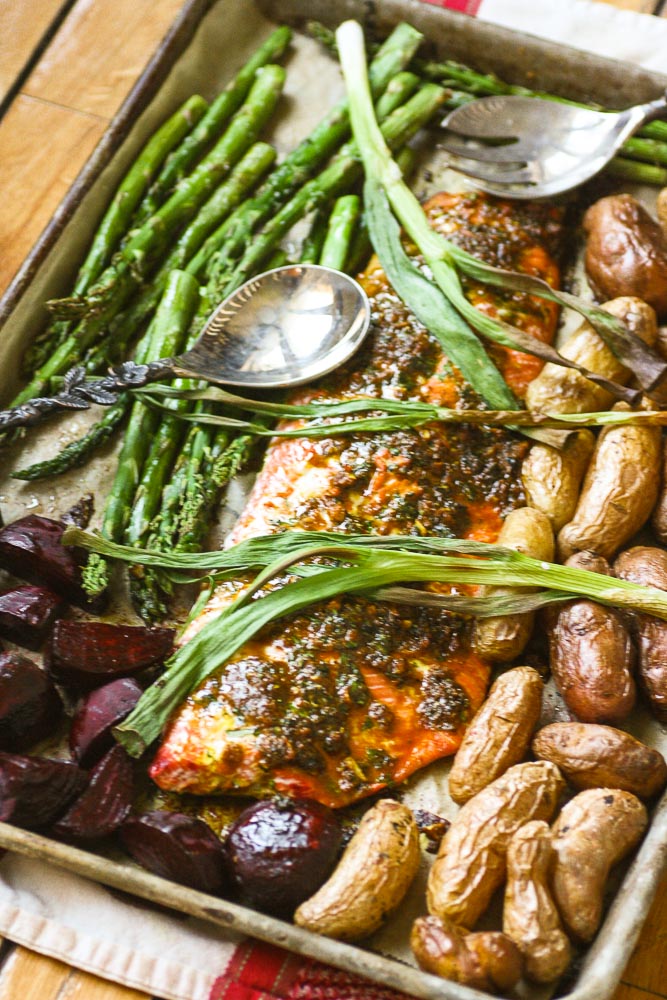
| Roasted Salmon Sheet-Pan Dinner | Print |
- 1-1/2 lb fingerling potatoes, washed
- 4 beets, peeled and quartered
- 1-1/2 Tbs extra-virgin olive oil
- sea salt
- 1-1/4 lb wild salmon fillet
- 3 scallions, roots cut off
- 3 garlic cloves, chopped
- 3 Tbs coconut sugar (here's a good one)
- 1 tsp dried oregano
- 1 tsp turmeric (I use this one sometimes)
- ¼ tsp hot paprika
- 10 large fresh basil leaves, chopped
- the zest of 1 large lemon
- 2 additional tsp extra-virgin olive oil (to add to the herb/spice mixture)
- Preheat your oven to 425°F convection setting or 450°F regular bake setting.
- Spread the beets and potatoes out on a large sheet-pan lined with parchment paper.
- Drizzle 1-Tbs oil over and sprinkle with salt.
- Place the tray in the oven and roast for 15 minutes.
- Meanwhile, combine the remaining ingredients in a small bowl. Add 2-tsp oil to the bowl and mix.
- Remove the tray from the oven and place the salmon in the center (move the beets and potatoes to the sides).
- Cover the salmon with the herbs and spices mixture.
- Arrange the asparagus in the spare space on the tray and drizzle them with the remaining 2-tsp oil and sprinkle with salt.
- Lay the scallions over the salmon.
- Place the tray back in the oven and roast until the salmon is cooked and the beets are tender enough for you. (Mine took 18-minutes.)
- Remove the tray from the oven and place it on a trivet or towel right on your table. Serve and enjoy!
